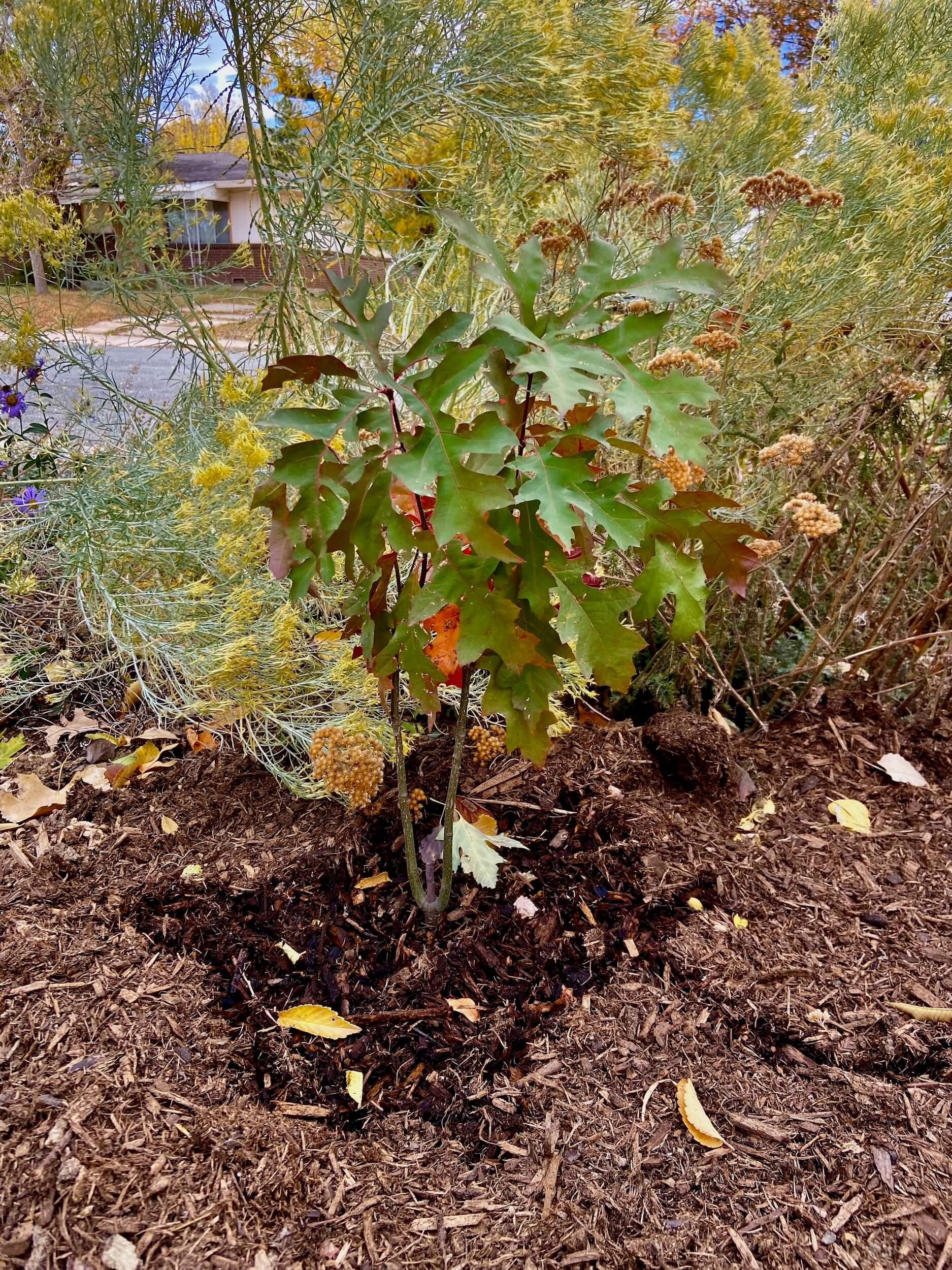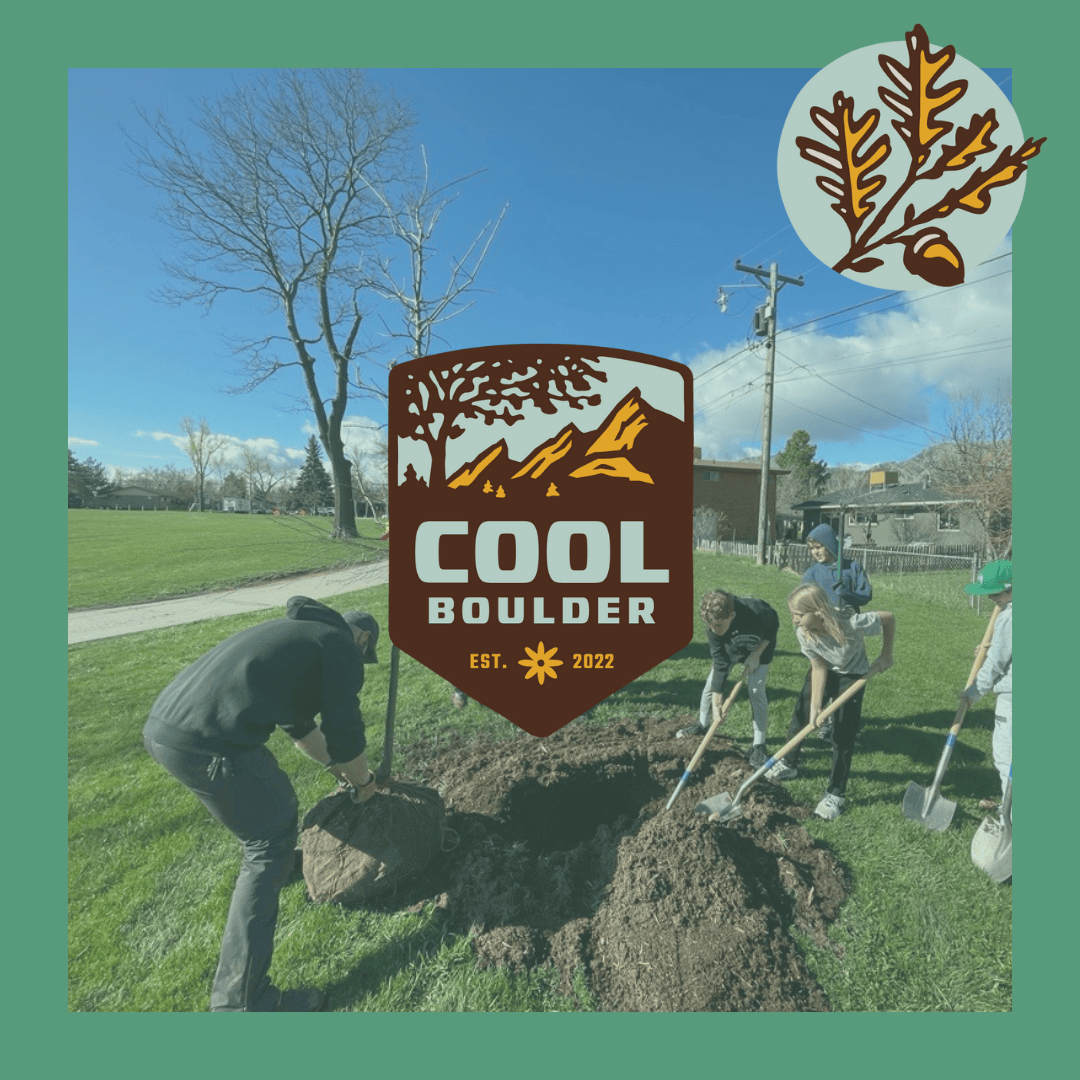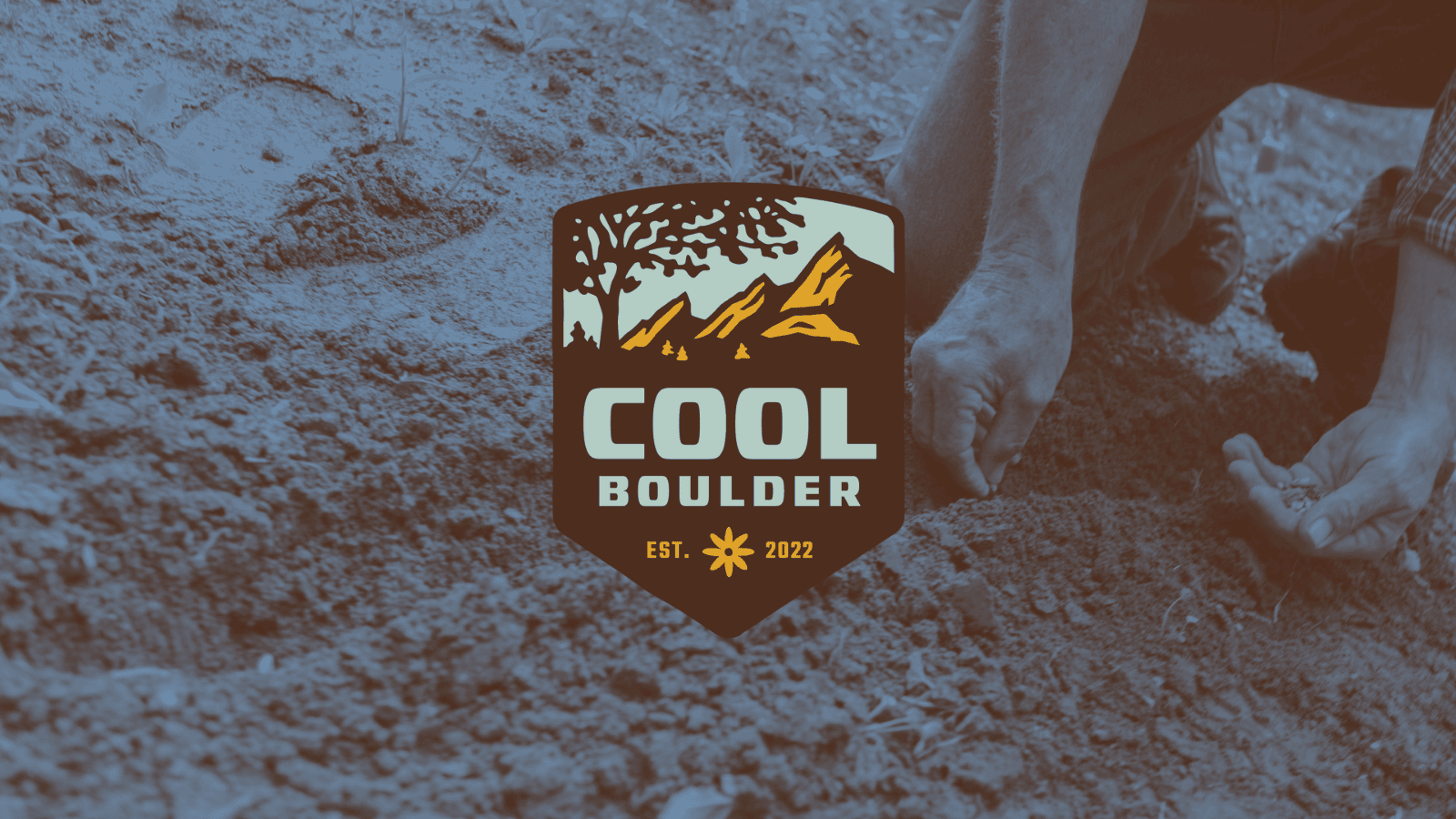Tree Planting Instructions
“There are 2 good times to plant a tree: 20 years ago and today.”
Boulder's dry climate and generally poor, alkaline soils present some difficulties for trees. Our soils are usually a shallow layer of compact clay with rocks, over a very dense clay subsoil that is hard for roots to penetrate. Healthy, long-lived urban trees get off to a good start when we pay attention to some tree-planting fundamentals. The following instructions have been shared with over 8,000 trees, which Your Neighborhood Christmas Tree Farm has grown from seed and given away in Boulder over the past 15 years.
LOCATE LOGICALLY
Trees need room to develop root systems underground and branches above ground. Don't plant trees that will grow too large in small areas. Also, avoid planting large trees under power or telephone lines or too close to buildings. Consider planting for energy conservation. Deciduous trees will shade the west, south, and east sides of the home in summer, and evergreen trees along the west and north edges of the lot will provide winter windbreaks. Think about the mature size and shape of trees and whether their roots might invade sewer lines, lift and crack sidewalks or make bumpy lawns.
DIG DILIGENTLY (BUT CAUTIOUSLY)
To prepare the site, mark a circle or square at least 3 times the diameter of the tree's rootball. Excavate the area with a pick and/or spade, to the height of the rootball. Leave the bottom of the hole firm and undisturbed. To the excavated soil, add 25 percent, by volume, of a coarse organic amendment, such as sphagnum peat, compost, or aged manure. Mix it well with the excavated soil; this becomes your backfill.
PLANT PROPERLY
If you can't plant right away, keep the tree in a cool, shady, protected spot and keep the roots moist. Try to plant trees when the weather is cool, cloudy, and humid, but not windy. Remove any plastic or fiber containers from the rootball. Place the tree upright in the center of the planting hole. If the roots of a containerized tree are potbound, "tease out" some of the roots and shallowly slit the rootball's sides with your finger or a knife, but be sure the rootball stays intact. Shovel backfill into the hole; continue until roots are covered and most of the backfill is used. Don't tamp the soil with your feet.
FERTILIZE FRUGALLY!
Don't put fertilizer into the planting hole; it may cause root injury. Next spring, fertilize young trees lightly. Root stimulator solutions have negligible value.
**WATER WELL**
THIS IS THE KEY THING TO YOUR TREE’S SURVIVAL IN OUR ARID CLIMATE!
Water the soil at relatively low pressure. Let the water, not your foot, settle the soil. If the soil settles below grade, add more backfill. When done, the planting area should be well-soaked and moist; the backfill should barely cover the top of the rootball. Watering frequency depends on the soil, not the calendar. Dig with a trowel on the edge of the planting area. Soil that feels moist and holds together when squeezed doesn't need water. Overwatering drives air from the soil, causing root suffocation, but generally count on watering about every two weeks at first. Mulching and heavy clay will reduce watering frequency; sandy loose soil increases it. Send your trees into winter with a good supply of moisture by watering them thoroughly in fall. Water once a month during extended warm, dry periods of winter to prevent drought damage to roots. This is especially important in the first year. If you are planting a row of trees or shrubs, consider installing a soaker hose or simple drip line to make your watering easier. See https://digitalcommons.unl.edu/extensionhist/1213/ for information on designing drip systems.
PRUNE PRUDENTLY
A newly planted tree needs only minimal pruning. Prune out only dead, diseased, or injured branches. Research shows that transplanted trees establish quicker when as much foliage as possible remains. If you do prune, don't use pruning compounds on pruning cuts.
STAKE SENSIBLY
Don't stake small trees or those not in the wind's path. Trees can be staked too tightly or for too long. To stake, run wire through grommeted staking straps or use wide strips of carpeting. This way, the straps, not the wire, pass around the trunk. A year of staking usually is sufficient.
DETER THE DEER
Boulder’s healthy deer population likes to eat young trees, but the most significant damage to trees comes from bucks practicing their sparring. The bark from a tree can be totally stripped off, and the tree whipped and broken to a stump, overnight. The most effective protection is a single fence-post driven into the ground about a foot from your new tree, with a 2-foot high cylinder of sturdy wire encircling your tree wired to the post. You can position the wire off the ground so that it is easy to get a mower underneath and raise it up higher on the post as your tree grows. The wire gets tangled in the bucks’ antlers, which they don’t like, and they will leave your tree alone.
MULCH MEANINGFULLY
A forest tree provides its own mulch with several inches of leaves on the ground. We can imitate this by mulching the planting area with 3 to 4 inches of wood chips, chunk bark, straw, pine needles, or shredded leaves. Don't use plastic beneath the mulch; water or air can't penetrate it. Fabric-type weed barriers are preferable. One thing you won't see in the forest is manicured lawns around a tree. Research shows that newly planted trees are at a disadvantage when they must compete with grass for water, air, and nutrients. Keep grass out of the planting area for at least one year. If you mulch around trees, instead of planting grass, you also prevent possible trunk damage by lawn mowers or string trimmers.
WRAP IN WINTER
Use crepe paper or other wraps on your deciduous tree trunks about Thanksgiving time; remove the wraps around Easter. Do this for the first 2 to 3 seasons. This protects young trees from winter sunscald.






